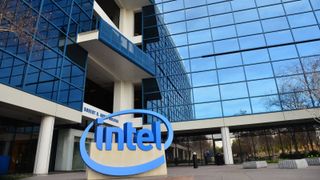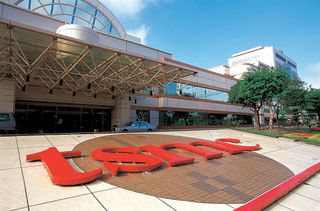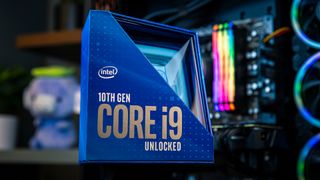This is why Intel is beating AMD Ryzen on price and availability
It's not been an easy ride, but don't write off Intel just yet.

A new report from Mercury Research has AMD losing market share in the last three months, ceding more control of the CPU game back to Intel. That's a somewhat surprising revelation because it's wildly accepted that AMD has the better processors right now—you only need look at our best CPU for gaming guide to see AMD takes up the number one and two slots, with Intel being relegated to the bronze medal position with its Core i7 10700K.

Best CPU for gaming: the top chips from Intel and AMD
Best graphics card: your perfect pixel-pusher awaits
Best SSD for gaming: get into the game ahead of the rest
Here's the thing though, depending on where you live in the world, it's almost impossible to get your hands on the AMD Ryzen 9 5900X or the AMD Ryzen 5 5600X. And if you can, there's a good chance you're going to be paying over the odds for the pleasure. Sometimes well over. And, while they are both great chips, price is obviously an essential factor.
Intel, meanwhile, has plenty of its chips on the shelves ready for customers to buy. It's clearly feeling a bit bullish too, as there are deals to be had on its very latest processor lines. The likes of the Core i5 10600K recently popped up on Best Buy for $230, which is a $50 saving on its usual list price and the Core i7 10700 (that's the non-K version) can be had for $295 over at Newegg and Best Buy—that's a $65 saving. Even the Core i7 10700K can be had for $25 less than its normal selling price, at $360.
Our buying guide still stands, if you're in the market for a new build, then AMD's Ryzen 5000-series chips are the way to go. But we wouldn't recommend paying over the odds for them. But if you can't find the Zen 3 CPUs at reasonable prices, then Intel's chips are just as capable in-game and right now offer great value for money as well.

So how has Intel got so many chips out there and AMD so few? Supply and demand. Intel has full control over its supply chain while AMD has to battle the likes of Apple, Nvidia, and Qualcomm et al. to try and get more production capacity at TSMC. And with reports that like the fact that TSMC's 3nm production capacity has already been reserved up to 2024, there probably isn't a lot of spare capacity there right now.
We're as guilty as any site for constantly poking fun at Intel over the fact that it's still using a production process node that it should have kicked out into the long grass at least five years ago, but Intel appears to have turned its difficulties into a positive. Yeah, it may not be the most cutting-edge production process around, even at Intel, but it works. Intel knows how to get the most from it, and has done incredibly well so far pushing clock speeds ever higher—5.3GHz on its Core i9 10900K for instance.
Don't get me wrong. It's not like Intel is in a great place with its process development—its share price took a massive hit after admitting there were problems with its move to 7nm, and these problems were undoubtedly a factor in CEO Bob Swan's decision to step aside so known techie, Pat Gelsinger, could take over.
The biggest gaming news, reviews and hardware deals
Keep up to date with the most important stories and the best deals, as picked by the PC Gamer team.
Still, at a time when some are calling for Intel to stop focusing so much on the manufacturing side of its business, it seems that this doggedness has actually worked surprisingly well.

Obviously, it would be better if Intel hadn't had production problems. Imagine a world where it was competing with AMD on a slightly more even footing, possibly with 10nm or 7nm desktop chips in tow, and it probably wouldn't have to take a scalpel to its price tags, but the very fact it's still not only in the game but increasing its market share, is testament to its decision to keep going on the manufacturing front.
Key to this is that Intel doesn't have to fight with its competitors to try and get allocation for its chips. Which is essentially what AMD has to do to get more capacity from TSMC. And while Intel cosying up with TSMC is on the cards in the short term, Intel's new CEO Pat Gelsinger has said 7nm production is looking good and that the majority of its 2023 products will be manufactured internally.
After managing to increase its market share against a technologically more advance AMD, that seems like a wise move.
AMD may have the best architecture right now, using an advanced production process that helps it shine, but without the volume, it simply doesn't stand a chance of making the most of a buoyant market. Intel also has a new CPU architecture on its way soon with Rocket Lake, another 14nm design but with a backport of the 10nm Ice Lake Core architecture.
That will give it a bit of an IPC bump, but also means it's on a mature production node which will be straightforward to manufacture. The fact that it could actually appear in volume is one reason that Rocket Lake, despite its geriatric process, might actually be a win for Intel. Especially if it's priced right.
For now though, if you are looking to build a brand new PC today, then the likes of the Core i7 10700 for $295 is really hard to ignore. Even if it doesn't have support for PCIe 4.0.
Alan has been writing about PC tech since before 3D graphics cards existed, and still vividly recalls having to fight with MS-DOS just to get games to load. He fondly remembers the killer combo of a Matrox Millenium and 3dfx Voodoo, and seeing Lara Croft in 3D for the first time. He's very glad hardware has advanced as much as it has though, and is particularly happy when putting the latest M.2 NVMe SSDs, AMD processors, and laptops through their paces. He has a long-lasting Magic: The Gathering obsession but limits this to MTG Arena these days.
Most Popular


